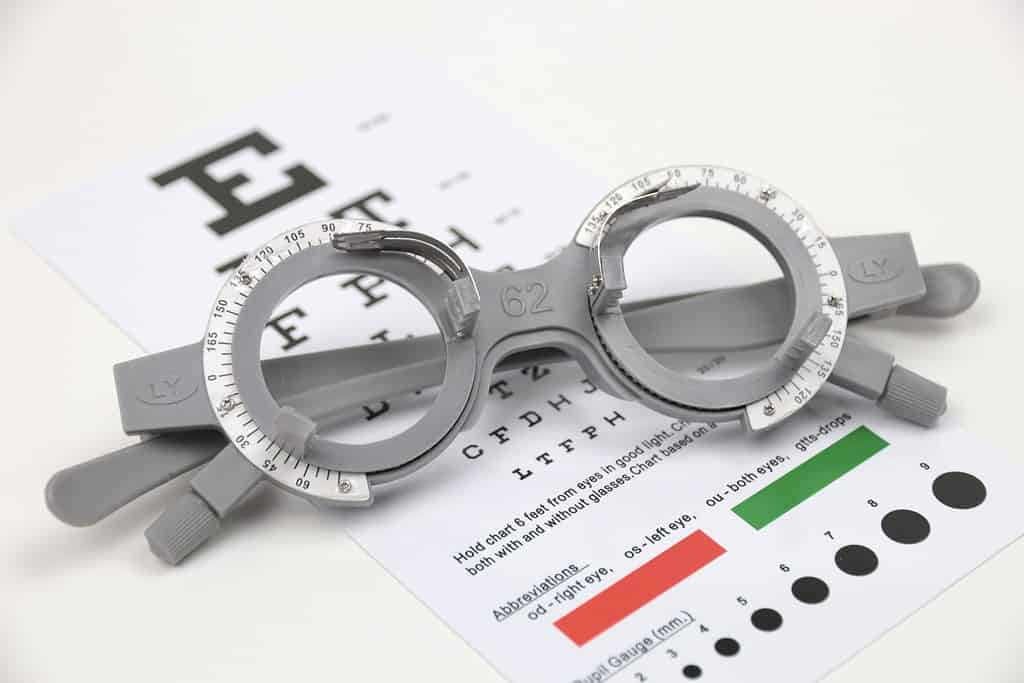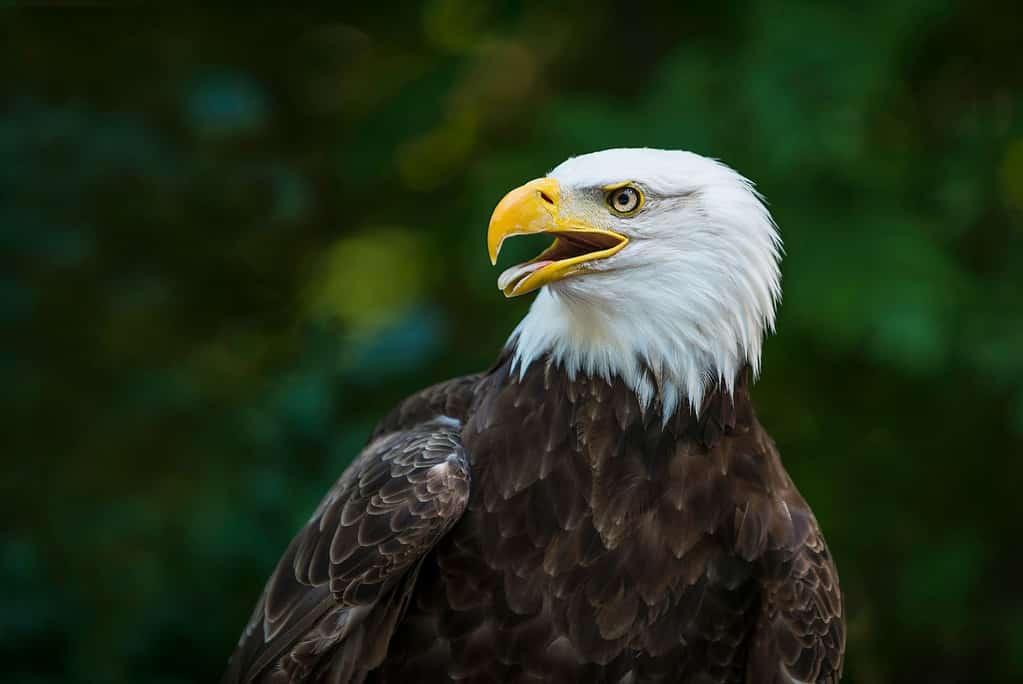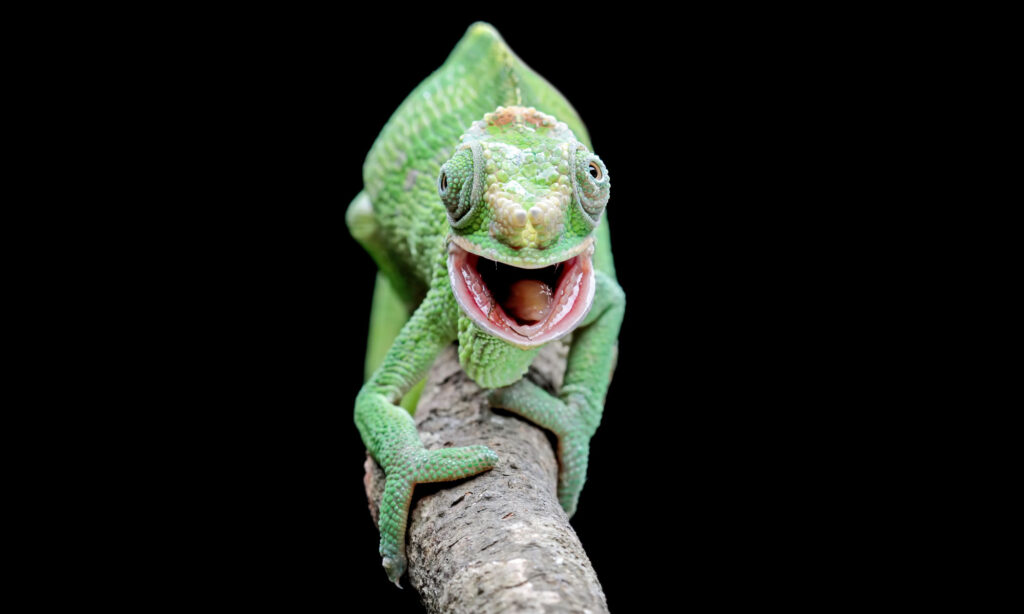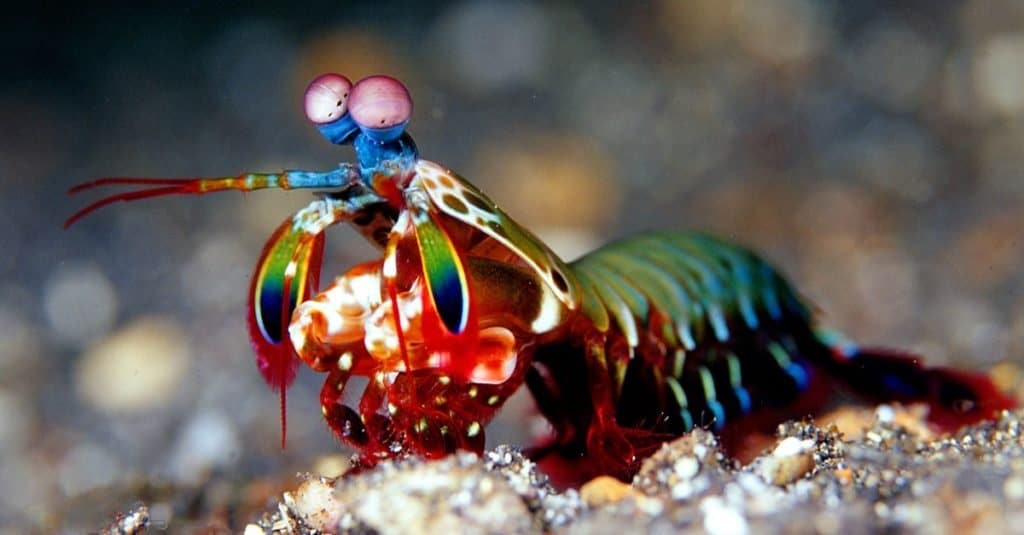According to a study by the Vision Impact Institute, around 75% of Americans need corrective lenses. Clearly (or not-so-clearly, depending on your point of view), a lot of us need some help with our vision. Some of our friends in the animal kingdom could possibly benefit from glasses or contacts, as well. The rhinoceros, for example, has exceptionally poor eyesight. That’s not necessarily a great feature for an animal that can weigh more than a heavy-duty pickup truck and can run upwards of 30 miles per hour! But, while there are plenty of animals with poor vision, some also have excellent eyesight. Here is a list of some of the world’s best-seeing animals.

There are some animals that would win easily over humans in an eye chart test.
©iStock.com/Komthong Wongsangiam
Note: the topic of eyesight isn’t as straightforward as it may seem at first. Overall vision comprises various factors such as visual acuity, depth perception, field of vision, light spectrum range, focus near and far, and on and on. It is impossible to definitively name an animal that wins in all of these categories, but when painting with a broader brush, we can point to some animals with truly outstanding eyesight.
Animal With the Best Eyesight
Overall, the eagle has the best eyesight of any animal. The saying “eagle eye” is often used to describe someone who has a keen eye for detail. There is a good reason why that colloquialism came into use. The eye of an eagle is the sharpest eye in the animal kingdom.
Visual acuity is the ability to focus on objects from a determined distance. It is measured on the familiar 20/20 scale. “Perfect” human vision is said to be 20/20.
Using that scale, eagles have visual acuity of 20/5. This means an eagle can see an object at 20 feet, while a human with “perfect” vision must be five feet away to see that same object. Some research indicates that eagles may even have a vision as sharp as 20/2.5. In that scenario, a “perfectly-sighted” human would have to be 2.5 feet away to see an object that an eagle could see from 20 feet away. An eagle has vision anywhere from four to eight times better than a human, and that is assuming the human has 20/20 vision. As noted at the beginning, most of us do not.

Eagles have the sharpest visual acuity in the world.
©iStock.com/hsun337 – License
Though bald eagles and golden eagles only weigh 10-14 pounds, their eyes are roughly the same size as a human’s. These raptors can spot small prey, such as a rabbit, from two to three miles away!
Along with this absurd visual acuity, eagles also have a near-panoramic visual field. They can see up to 340° thanks to the angle of their eye sockets.
These birds of prey also have enhanced color-detecting eyesight. Eagles can see more colors than humans, including colors on the UV spectrum. Eagles have eyesight that is truly unparalleled in the animal kingdom.
Best Low-Light Vision
Vision in low-light conditions can be calculated using a measure of light per square meter known as lux. Bright sunlight has over 10,000 lux. The human eye can see in conditions as low as one lux. Not too shabby, but again, some animals blow us away when it comes to seeing in the dark.
Steven Levithan notes that cats, such as your pet cat Fluffy, can see in conditions as dark as 0.125 lux. Owls dial up the night vision to 0.0125 lux. Tarsiers, who have the largest eyes of any mammal relative to body size, can see down to 0.001 lux.
After that, we enter the insect world. Dung beetles can see 0.001–0.0001 lux. Carpenter bees can see in conditions as dark as 0.000063 lux. But the surprising winner of the low-light vision competition may just be the cockroach. The lux measurement was not used to test their low-light vision, but these insects may see better in low-light (or, more accurately, no-light) conditions than any other animal on Earth.

Do cockroaches have the best low-light vision in the world? It’s certainly possible!
©iStock.com/Wi6995
Of course, there are deep-sea animals that have yet to be studied. For that matter, many have yet to be discovered. It is impossible to say this with utter certainty, but the cockroach certainly makes a strong case for the best low-light vision in the world.
Broadest Field of Vision
The chameleon takes the top spot for the broadest field of vision. This lizard’s eyes are mounted on conically-shaped turrets. The eyes, which operate independently from one another, can rotate to provide vision from the front, sides, and behind. This lizard has 360° vision!
Along with being able to see in a complete circle, the chameleon can toggle between monocular and binocular vision. It can also see UV light.

With eyes mounted on turrets, chameleons have 360° vision.
©Agus_Gatam/Shutterstock.com
Eye Adaptability
The Arctic reindeer may take the prize for eye adaptability. The reindeer live in snowy regions, and snow reflects sunlight. Albedo is the proportion of light that is reflected off of an object. Snow has the highest albedo of any material on Earth. This is why it can be blindingly bright when the sun shines after a snowstorm.

Reindeer have some of the most adaptable eyes on Earth.
©iStock.com/Artpilot
Reindeer have eyes that adapt to this brightness and protect them from the intense ultraviolet light. It is a bit like built-in sunglasses. However, that also presents a potential problem. Along with the blinding snow albedo during sunny weather, the reindeer’s native range is also dark for months at a time during the winter. The reindeer’s eyes also adapt to those low-light conditions.
Animals that are active at night often have a reflective structure in their eyes known as the tapetum lucidum. The reindeer has a tapetum lucidum that changes color as it adapts to the bright or lowlight conditions the reindeer lives in. The Arctic reindeer’s eyes are blue in the winter and golden in the summer. No color-changing contacts are needed for these deer!
Largest Eyes
The colossal squid has the largest eye of any animal. In fact, this squid has the largest eye of any known creature in history. The colossal squid’s eye measures 12-16 inches across. That is the size of a large pizza!
While the blue whale is the largest creature to ever exist overall, the colossal squid’s eye is five times larger than that of a blue whale. These massive eyes help the colossal squid spot its prey in the darkness of the ocean depths. It also helps it spy on an oncoming sperm whale, the squid’s only natural predator.

The colossal squid has enormous eyes that assist it in finding prey in the dark ocean depths.
©Rui Palma/Shutterstock.com
Most Complex Eyes
The mantis shrimp takes the prize for the creature with the most complex eyes. In fact, mantis shrimp may have the most complex visual system of any creature to ever live.
Consider this: humans have three distinct color-sensing cones. One each for red, green, and blue light. Every color we see is a derivation or combination of these three colors.
But the mantis shrimp has a staggering 12-16 color-receptor cones! As the popular cartoon from The Oatmeal puts it, “Where we see a rainbow, the mantis shrimp sees a thermonuclear bomb of light and beauty.”

The mantis shrimp may have the most complex eye anatomy of any creature that has ever lived.
©iStock.com/worldclassphoto
The mantis shrimp’s eye stalks move independently. Each eye has three pupils. The mantis shrimp can see ultraviolet, polarized, and infrared light.
The mantis shrimp’s eye anatomy is so incredibly complex that researchers believe the shrimp’s eye may pre-process visual signals before they reach the brain. Their eyes have a mind of their own, so to speak.
This is one amazing arthropod!
The photo featured at the top of this post is © Peter Kaminski / CC BY 2.0 – License / Original
Thank you for reading! Have some feedback for us? Contact the AZ Animals editorial team.






